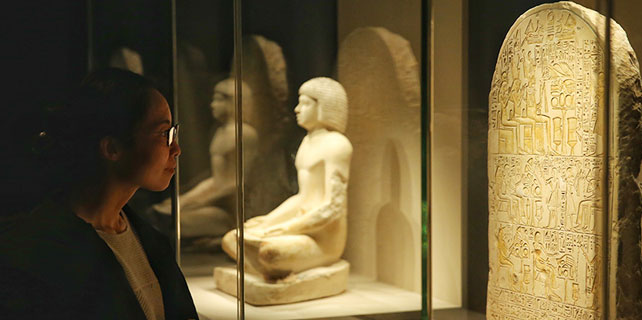China's soft power approach makes deep inroad in South Asia
 |
|
Dancers performance at the booth of Tailand during the fourth China-South Asia Expo in Kunming, capital of southwest China's Yunnan province, June 12. [Photo/VCG] |
The Belt and Road Summit 2017 proclaimed by China as "diplomatic highlight of the year" has given new direction to China's 30 years of foreign policy and kick-started new era of globalization. The Belt and Road Initiative is by far the biggest economic project and no wonder why developing countries are attracted by its potential investment in infrastructure they badly need. This is the economic soft power mechanism that the initiative has provided to China. The US political scientist Joseph Nye, on his concept of soft power, accepts that while potential economic investment opportunity is a soft power tool for global outreach, it's merely the resources, rather than the behavior, which induces a country’s soft power potential.
Out of the five principles of Belt and Road Initiative, it's the infrastructure investment that has attracted most attention. Its last principle of mutual benefit and peaceful co-existence is considered a soft power mechanism that portrays China as a promoter of peace and shows its desire to cultivate friendly ties from Central Asia to South and Southeast Asia to Africa. Moreover, it calls the initiative an expression of collective action from all countries rather than a strategy. As it calls for mutuality, China has placed an enormous importance on its neighborhood policy for the effective action. China, to quote an opinion piece in Xinhua that says “a near neighbor is better than a distant cousin”, has shown the importance it attaches to its relationship with its neighbors. South Asia, above all, is one of the complex regions for China. This relationship is best described as "so close, yet so far" because while China and South Asia share one of the earliest civilizations in the history of mankind, there haven't been many exchanges between the two.
The initiative thus can bring the region closer via infrastructure development and road and maritime connectivity. However, as an economic soft power, its success rate is heavily depended upon the returns from the investment. It plans to diversify trade prospects in countries such as Afghanistan and Pakistan, but these countries aren't top in the World Bank's ease of doing business league and neither are other nations like Nepal and Sri-Lanka. It is expected that cooperation with China will help this nations to uplift their economic strength. China-Pakistan Economic Corridor (CPEC) is not only an infrastructure-based project. It will also promote China-Pakistan cultural and people-to-people exchanges. China had already signed cultural and educational agreements with all member states of South Asia except Bhutan. Confucius Institutes have opened in seven countries of South Asia. They aim to promote Chinese culture, language social issues in the region. B&R is a multi-faceted way of cooperation. China's soft power in South Asia actually ranges from cultural exchanges to economic partnership.
India, its biggest vocal critic, continues to proclaim the initiative as a "colonial exercise" of the "Middle Kingdom". Due to the massive support of the global community to the initiative, it is said by many Indian scholars that India will not have any other choice than to support B&R. They added that India made a mistake by not sending a representative to the Beijing B&R Summit.
George Gao of Foreign Policy magazine said, "Today, if people in Eurasia were all fans of Chinese pop music or television dramas, or had a more positive image of China, it might be easier for their governments to partner with Beijing on win-win initiatives like One Belt One Road". As India has dominated cultural soft power in the region, economic soft power of Belt and Road Initiative is now taking the right direction in South Asia. Experts said that India's hegemonic and British-era foreign policy towards the neighbors is forcing them to look at China for cooperation. A huge number of educational and cultural exchanges programs are taking place between China and South Asian nations. More and more people are learning Chinese language due to its future prospects and help in maintaining relations with various circles of Chinese people.
China's influence is growing. In Bhutan, the market is full of Chinese goods; the country's tallest statute of Lord Buddha was built by a Chinese businessman. In Nepal, after the May 2015 earthquake Indian media indulged in fake news reporting and then the Indian government announced the economic blockade, which made Nepal redefine its trade terms consequently and joined the OBOR in the hope of reducing its trade and transport dependency on India.
In conclusion, the initiative has a positive image in most of the South Asian countries as it has a soft power nature too. The relationship between China and most of the South Asian nation is going smoothly mainly due to two reasons: first, the principle of non-interference and mutuality it entails and second, the turnaround of India's neighborhood policy which caused its neighbors to look toward north for multiple cooperation based on mutual trust and win-win cooperation. No doubt, China's overarching policy towards South Asia is cultural mix of soft and hard postures and with B&R the biggest challenge for Beijing will be to communicate its perspective and vision and build-up its social and cultural rapport on multiple levels.
Buddhi Prasad Sharma is PhD Candidate in Communication University of China, yesmanbush@gmail.com.
Raunab Singh Khatri, Master's Degree Student in Peking University. raunabsinghkhatri.rk@gmail.com.
This Article is a summary of their full research paper on "The Politics of Soft Power: Belt and Road Initiative as Charm Influence in South Asia."
- Belt and Road Initiative important for socio-economic development of entire South Asia: Nepalese officials
- Regular China-South Asia freight train officially launched
- Belt and Road Initiative to change landscape of economic cooperation in South Asia
- Xi: China considers Bangladesh important partner in South Asia




















